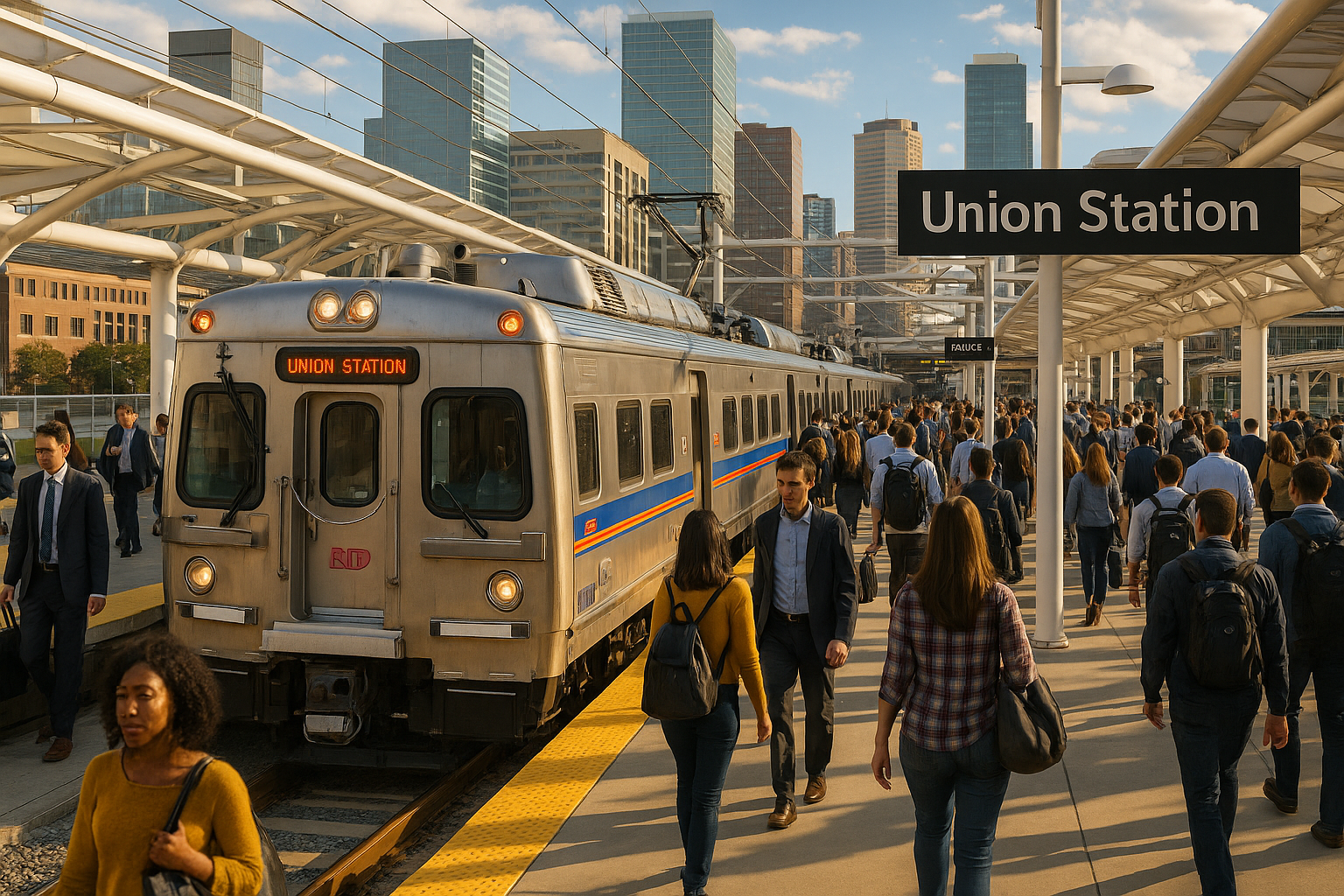RTD Commuter Rail: Serving Denver, CO
Published: June 30, 2025
By: Adam Burns
Denver, Colorado, is a city known for its stunning mountain vistas, vibrant cultural scenes, and a commitment to sustainable urban development. At the heart of this commitment lies the Regional Transportation District (RTD), the metropolitan area's primary public transit agency.
Among its numerous services, the RTD Commuter Rail system is a pivotal component in connecting the city's neighborhoods, suburbs, and neighboring regions.
This article provides an in-depth look at how Denver’s RTD Commuter Rail system is structured, its significance, operations, and what it offers to both residents and visitors.
Genesis
The RTD system is relatively young, with its roots tracing back to the early 21st century when the need for a comprehensive transportation network became apparent. As Denver expanded both in terms of population and economic activity, the city's infrastructure demands evolved, prompting the development of this rail system.
The commuter rail system falls under the larger transit expansion project known as FasTracks, which was approved by voters in 2004. This plan envisioned a robust multimodal transport network that included light rail, bus rapid transit, and suburban train services designed to meet the growing needs of Denver's metropolitan area.
Routes
RTD currently comprises several major lines that serve as critical arteries of the city's transportation network:
University of Colorado A Line
Perhaps the most well-known line, the A Line connects downtown Denver's Union Station to Denver International Airport. This 23-mile route offers a convenient, stress-free way to travel to and from the airport, with trains running every 15 minutes at peak times.
B Line
Initially conceptualized as a much longer line, the B Line currently operates from Union Station to Westminster. Future expansions aim to extend its reach further north to Boulder and Longmont, unlocking greater accessibility for these rapidly growing communities.
G Line
The G Line serves Denver's northwest suburbs, reaching as far as Wheat Ridge. Part of a broader scheme to enhance access to outlying residential areas, this line connects commuters to both local neighborhoods and major business centers.
N Line
One of the newest additions to the system, the N Line runs from Union Station to Thornton, covering a 13-mile stretch. The line services Denver’s northern suburbs, promoting connectivity in a rapidly developing region.
Each line is equipped with modern train cars, known for their comfort, efficiency, and eco-friendliness. Passengers enjoy amenities like Wi-Fi, spacious seating, and ADA-compliant facilities, making commuting a pleasant experience.
Integration with Other Transit Services
The effectiveness of the RTD Commuter Rail system is significantly amplified through its integration with other public transit offerings. At Union Station, a major transportation hub in downtown Denver, commuters can seamlessly transition between commuter rail, light rail, regional bus services, and the city’s free 16th Street Mall Shuttle. This multimodal approach ensures comprehensive coverage of the region, facilitating easy travel within the city and beyond.
The hub-and-spoke model adopted by the RTD allows for efficient transfers and route planning, redefining the urban mobility experience for millions of residents and visitors annually.
Economic and Environmental Impact
RTD is more than just a transport network; it's a catalyst for economic growth and environmental stewardship. By reducing reliance on personal vehicles, the system helps cut down traffic congestion and greenhouse gas emissions, aligning with Denver's broader goals of sustainability and environmental conservation.
Moreover, the development of the commuter rail has spurred significant economic activity along its routes. Neighborhoods within walking distance of stations have observed increased real estate values, new business formations, and population growth. These “transit-oriented developments” underscore the strategic importance of integrating transit systems into urban planning.
Challenges and Future Prospects
Despite its successes, RTD faces challenges common to expanding urban transit networks. Budget constraints, fluctuating ridership levels, and construction delays have occasionally impacted the pace and extent of the system’s growth. Funding for future expansions, including planned extensions of the B and N Lines, remains a critical issue that requires innovative solutions and public support.
The RTD continues to explore new technologies and strategies to optimize service delivery. Advances in data analytics, real-time passenger information systems, and contactless payment methods are all part of efforts to enhance the commuter experience.
The Commuter’s Experience
For daily passengers, RTD represents a reliable and efficient transit option. Commuters benefit from punctual services, streamlined ticketing systems, and the convenience of avoiding traffic-infested roads. Additionally, the ability to commute while reading, working, or simply relaxing contributes to a reduction in commuter stress and an improvement in quality of life.
To encourage usage, RTD offers various fare options, including day passes, monthly passes, and special discounts for seniors, students, and individuals with disabilities. The extensive timetable ensures availability for both early morning travelers and evening commuters.
Denver’s commuter rail system stands as a testament to the city’s commitment to modern, sustainable transportation solutions. It exemplifies how strategic investments in public transit can drive urban growth, enhance quality of life, and foster a greener future.
As it continues to expand and adapt to the evolving landscape of Denver, the commuter rail system promises to remain a pivotal element of the city’s infrastructure—bridging neighborhoods, economies, and communities.
With its blend of cutting-edge technology, thoughtful urban integration, and a keen eye on future developments, Denver's RTD Commuter Rail system serves as a model for cities worldwide aiming to balance growth with sustainability. As the network enhances its coverage and efficiency, it paves the way for a more interconnected and environmentally conscious urban future.

